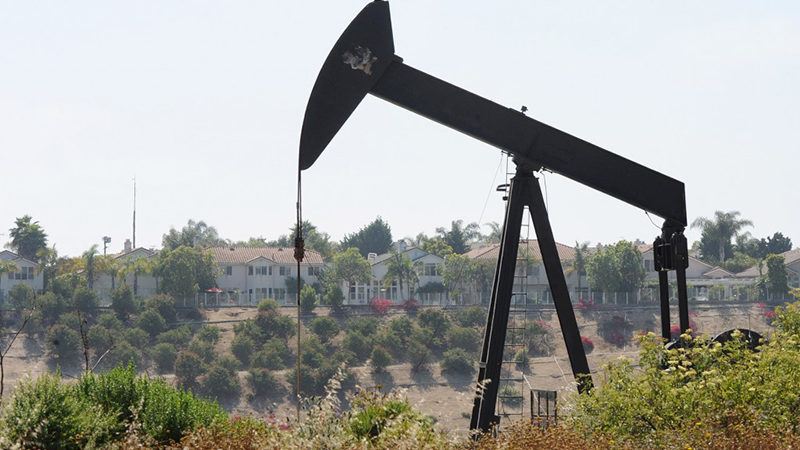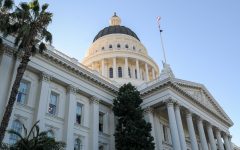
Oil pumpjack in Inglewood (Photo: ioes.ucla.edu)
Ringside: California’s 2023 Legislative War on Affordability and Democracy
Will turning 30 percent of all land and coastal waters in the state over to government bureaucrats and environmentalist nonprofits actually help nature?
By Edward Ring, December 7, 2023 2:33 am
As we move into the final month of 2023, it is appropriate to review recent legislative actions that will have a significant impact on California’s ability to deliver abundant and affordable energy and water to its residents.
There isn’t much good news. Almost without exception, the California Legislature is making energy and water scarce and expensive, the opposite of what ought to be an obligation of government policy. And to make it harder for voters to take matters into their own hands, our lawmakers have also targeted the initiative process. Here are some of the year’s biggest bloopers, courtesy of our green saviors in Sacramento.
In April 2022 the California Natural Resources Agency issued a report titled “Pathways to 30×30 California. It provided a plan to “preserve” 30 percent of California’s land and 30 percent of California’s coastal waters by 2030. Following the recommendations made in this report, earlier this year Senate Bill 337 was signed into law. Because the state can’t afford to purchase so much land, through this law it empowers state agencies to enact what are in effect zoning restrictions and to support private investments in conservancies.
But will turning 30 percent of all land and coastal waters in the state over to government bureaucrats and environmentalist nonprofits actually help nature? The most mismanaged land in California is our 20 million acres of National Forests, and the healthiest and most biodiverse forests are the roughly 4 million acres of industrially managed private timberlands. This land (and sea) grab by the government is no guarantee that biodiversity will be preserved, but it will take away the ability for people to live there or benefit from its resources.
In moves that ought to be viewed as anathema to the goals of wildlife and wilderness preservation, the Newsom administration, in coordination with the Biden administration, has declared a goal for California to install 25 gigawatts of offshore wind capacity by 2045. Doing this would require a minimum of 2,500 wind turbines (10 megawatts each, which is probably bigger than they’ll end up using), each one over 1,000 feet in height and 20 miles offshore, each one dangling a high voltage power line and at least three tethering cables anchored to the sea floor 4,000 feet down.
But never mind the details. The California Offshore Wind Energy & Jobs Act, signed by Governor Newsom last month, will require the State Energy Resources Conservation and Development Commission, to recommend a “seaport readiness strategy,” and “to conduct a study on the feasibility of achieving 50% and 65% in-state assembly and manufacturing of offshore wind energy projects.”
Offshore wind developments, at the gigawatt scale proposed, will be an environmental and financial catastrophe. There’s a reason developers have already pulled out of projects in the North Sea and off the East Coast of the U.S. But they’re confident California will hand over sufficient billions in subsidies to make it happen.
And then there’s the Climate Corporate Data Accountability Act, also signed last month by Governor Newsom. Any corporation with worldwide revenue in excess of $1 billion, from now on, will need to report their greenhouse gas emissions to the State Air Resources Board if they want to continue to do business in California.
This legislation is a gift to the burgeoning carbon accounting industry. Imagine having to come up with a report, every year, on all this: “emissions activities that include, but are not limited to, company operations, supply chain activities, employee and consumer transportation, goods production and movement, construction, land use, and natural resource extraction.” Also in the bill, annual independent audits of these reports and emissions reduction plans. How many more businesses will leave the state rather than perform this costly, intrusive, and very subjective exercise? And how long before this law applies to smaller companies?
In another strike at “emissions,” and heedless of any reasonable cost/benefit analysis, last year California’s state legislature passed Senate Bill 1137, which would have taken effect in January 2023. It poses an existential threat to California’s oil and gas industry. It defines “health protection zones” as any area within 3,200 feet of an inhabited dwelling or business open to the public. It then prohibits new drilling for oil or gas in these designated areas, and imposes punitive regulations on any existing wells.
Again, never mind the facts. Arriving on emissions spewing tankers from half a world away, California now imports 75 percent of its oil, and 90 percent of its natural gas. Rather than encourage clean drilling to set an example for other nations, SB 1137 is just the latest attempt by California’s state legislature to eliminate in-state production of oil and gas. The industry is fighting back, with a must-win referendum to repeal SB 1137 that they’ve qualified for the November 2024 ballot. And that, of course, cannot be tolerated.
To prepare for the day when a majority of Californians recognize that the state legislature has done everything in its power to make life unaffordable for hard working families, AB 421, which proponents call “Referendum Reform,” is now in force.
The inspiration for AB 421 and the motivation for its passage is direct retaliation to the oil industry’s pending referendum, but its impact is much broader. It takes aim at a right enshrined in the California constitution, the ability to pass citizen initiated legislation. It will make it nearly impossible for anyone, including grassroots groups, to ever successfully qualify a referendum, or an initiative, ever again.
Moreover, in a display of stunning hypocrisy, it waves its essentially prohibitive requirements if the “grassroots” group of volunteers gathering signatures happen to be members of a labor union. No bias there. No double standard. Right? The significance of AB 421, its naked, power grabbing betrayal of democratic principles, cannot be overstated.
Here are highlights of AB 421, the bill that killed direct democracy in California.
1 – Would reduce from 180 days to 90 days the time allowable to gather signatures on petitions if the initiative measure proposes to repeal or amend, either directly or indirectly, a statute or portion of a statute enacted by the state legislature within the last two years. This means that any initiative that the Attorney General deems to indirectly affect enforcement of existing legislation will be treated as a referendum, cutting in half the days allowable to gather signatures.
2 – Require paid signature gatherers to register with and receive training from the state. Inevitably, this will severely limit the number of available signature gatherers. For signatures to count, every signed petition must include the circulator’s unique registration number.
3 – Require 10 percent of signatures to be obtained by volunteers rather than paid signature gatherers, unless the circulators are members of a union.
4 – Petitions circulated by volunteers must have, in bold, printed notification that a volunteer is circulating the petition, whereas petitions circulated by a person who is getting paid require a different notice, disclosing that a paid circulator is working. This creates a need for proponents to print and distribute at least two versions of the petitions. This adds expense, creates almost unavoidable potential for inadvertent errors, and introduces ambiguity – what if the petition is included in a direct mail appeal?
5 – Every petition must have a unique number to “facilitate administrative efficiency.” The practical impact of this is to eliminate the threat of a campaign whereby voters could download and print initiative petitions, and force centralized printing and shipping of petitions.
6 – Requires an “official top funders” sheet to accompany petitions, requiring anyone signing a petition to fill out an acknowledgement that they have read the funding disclosure. This and the other requirements make it much more likely some technicality will be violated, invalidating a higher percentage of signed petitions.
California’s Democratic lawmakers, wielding their mega-majority in both houses of the state legislature, claim to care about the health of the environment and the welfare of working families. Judging from their actions, however, they don’t care about either.
Some of their politically favored projects, in particular offshore wind and biofuel, are environmental catastrophes. The mere fact this is up for debate is a travesty. All renewable technologies, for that matter, are resource guzzling hogs that still have a long way to go before we can call them sustainable.
But in obeisance to the special interests that collect billions in state subsidies to profit off these scams, California’s legislature has made the state unaffordable, and undermined one of its most cherished democratic institutions.
- Ringside: What is the Future of California’s Republican Party? - December 31, 2025
- Ringside: CA GOP Just Blew $46 Million for Nothing – Here’s How They Can Avoid Repeating That Mistake in 2026 - December 24, 2025
- Ringside: Will the Delta Pumps Operate at Capacity this Winter? - December 18, 2025





2 thoughts on “Ringside: California’s 2023 Legislative War on Affordability and Democracy”